A midshipman is an officer of the lowest rank, in the Royal Navy, United States Navy, and many Commonwealth navies. Commonwealth countries which use the rank include Canada, Australia, Bangladesh, Namibia, New Zealand, South Africa, India, Pakistan, Singapore, Sri Lanka, and Kenya.
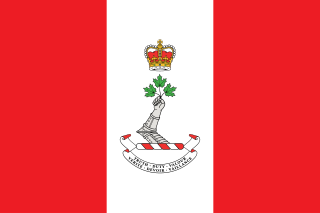
The Royal Military College(s) of Canada, abbreviated in English as RMC and in French as CMR, is a military academy and, since 1959, a degree-granting university of the Canadian Armed Forces. It was established in 1874 and conducted its first classes on June 1, 1876. Presently, it is the only federal institution in Canada with degree-granting powers; the Government of Ontario empowered RMC to confer degrees in the arts, science, and engineering through The Royal Military College of Canada Degrees Act, 1959. Programs are offered at the undergraduate and graduate levels, both on campus as well as through the college's distance learning programme via the Division of Continuing Studies.
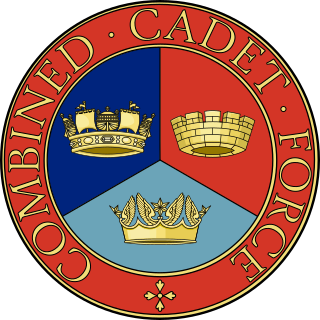
The Combined Cadet Force (CCF) is a youth organisation in the United Kingdom, sponsored by the Ministry of Defence (MOD), which operates in schools, and normally includes Army, Royal Navy and Royal Air Force sections. Its aim is to "provide a disciplined organisation in a school so that pupils may develop powers of leadership by means of training to promote the qualities of responsibility, self reliance, resourcefulness, endurance and perseverance".
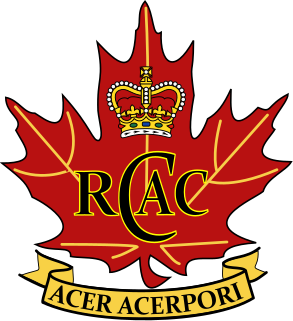
The Royal Canadian Army Cadets is a national Canadian youth program sponsored by the Canadian Armed Forces and the civilian Army Cadet League of Canada. Under the authority of the National Defence Act, the program is administered by the Canadian Armed Forces and funded through the Department of National Defence. Additionally, the civilian partner of the Royal Canadian Army Cadets, the Army Cadet League of Canada, also ensures financial, accommodations and transportation support for RCAC programs and services at a community level.
Officer Cadet is a rank held by military cadets during their training to become commissioned officers. In the United Kingdom, the rank is also used by members of University Royal Naval Units, University Officer Training Corps and University Air Squadron; however, these are not trainee officers with many not choosing a career in the armed forces.
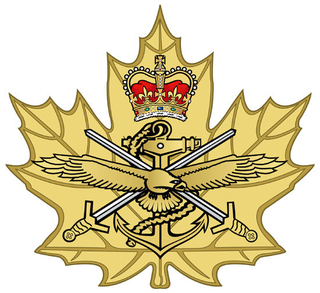
The Cadet Instructors Cadre consists of approximately 7,500 Canadian Forces (CF) officers whose primary duty is the safety, supervision, administration and training of Royal Canadian Sea, Army, and Air Cadets. The branch is the largest single group within the Canadian Forces reserve force subcomponent Cadet Organizations Administration and Training Service (COATS) and is the largest officer branch in the Canadian Forces. It is also the only branch of the Canadian Armed Forces that doesn't require its officer to hold or be in the process of obtaining a post secondary degree. The COATS subcomponent of the Reserve Force employs members from all branches and occupations of the Royal Canadian Navy, Canadian Army, and Royal Canadian Air Force of the Canadian Forces.

The Royal Canadian Sea Cadets is a Canadian national youth program sponsored by the Canadian Armed Forces and the civilian Navy League of Canada. Administered by the Canadian Forces, the program is funded through the Department of National Defence, with the civilian partner providing support in the local community. Cadets are not members of the Canadian Armed Forces.
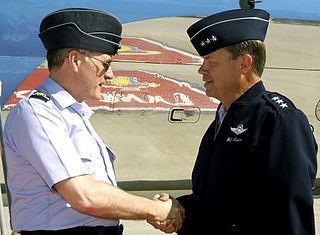
A side cap is a military cap that can be folded flat when not being worn. It is also known as a garrison cap or flight cap in the United States, wedge cap in Canada, or field service cap in the United Kingdom. In form the side cap is comparable to the glengarry, a folding version of the Scottish military bonnet. It has been associated with various military forces since the middle of the 19th century, as well as various civilian organizations.

The peaked cap, peaked hat, service cap, barracks cover or combination cap is a form of headgear worn by the armed forces of many nations, as well as many uniformed civilian organisations such as law enforcement agencies and fire departments. It derives its name from its short visor, or peak, which was historically made of polished leather but increasingly is made of a cheaper synthetic substitute.

The New Zealand Sea Cadet Corps is one of the three corps in the New Zealand Cadet Forces, the other two being the Air Training Corps, and New Zealand Cadet Corps. It is a military-style training organisation for young people between the ages of 13 and 21. Activities include sailing, and boat work, ropework shooting and drill, amongst other activities, many of which involving the other branches of the NZCF. Cadets need to pass an annual swimming test to undertake water-based activities.

The Navy League of Canada is a nonprofit organization founded in 1895 and incorporated in 1918. Originally formed to promote maritime issues to Canadians, the Navy League is the non-governmental partner of the Department of National Defence and supports the Royal Canadian Sea Cadets program. The Navy League also independently delivers the Navy League Cadet program for boys and girls between the ages of nine and twelve.
The Cadet Instructors Cadre (CIC) was founded on May 1, 1909 when the Canadian Army establishment of a "Corps of School Cadet Instructors (Militia)." Previously, a Special General Order issued on December 21, 1903 had allowed qualified male school teachers be appointed as a Second Lieutenant, and to be permitted to hold the rank as long as they remained an instructor and the Army Cadet Corps remained efficient. The adult leadership for the Sea, Army and Air Cadet Organizations in Canada developed quite separately from each other until 1968, when cadet instructors were consolidated in a tri-service Cadet Instructors List as a result of the integration of the Canadian Forces. The Canadian Forces Cadet Instructors Cadre marked 100 years of service on May 1, 2009.
The Navy League refers to various organisations worldwide:
The Navy League Wrennette Corps was formed by the Navy League of Canada in 1950 as a cadet organisation for girls to complement the Navy League Cadet Corps of Canada.
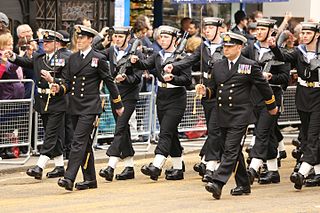
The uniforms of the Royal Navy have evolved gradually since the first uniform regulations for officers were issued in 1748. The predominant colours of Royal Navy uniforms are navy blue and white. Since reforms in 1997 male and female ratings have worn the same ceremonial uniform.
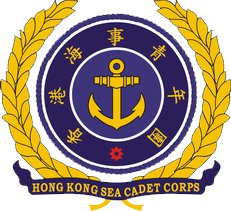
Hong Kong Sea Cadet Corps is a youth organization based in Hong Kong and formed in 1968 by former Royal Naval Reserve officers by the creation of Hong Kong Law

Currie Hall is a hall within the Currie Building, which is an annex to the Mackenzie Building at the Royal Military College of Canada in Kingston, Ontario. It was built in 1922, and is a Recognized Federal Heritage Building.
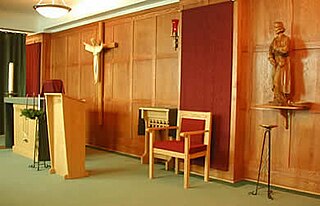
In 2013, the Royal Military College of Canada is celebrating the 50th anniversary of the two small devotional chapels in Yeo Hall, which were installed in 1963. With a view to encourage and enhance their spiritual well-being, the Protestant and Royal Catholic Chaplains, cadets and staff use the Chapels. Gifts to the chapels have been made by successive generations of cadets and ex-cadets.
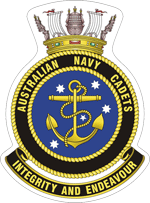
The Australian Navy Cadets (ANC) is a voluntary youth organisation owned and sponsored by the Royal Australian Navy. Together with the Australian Air Force Cadets and Australian Army Cadets, it forms the Australian Defence Force Cadets. It hosts over 91 units.



























